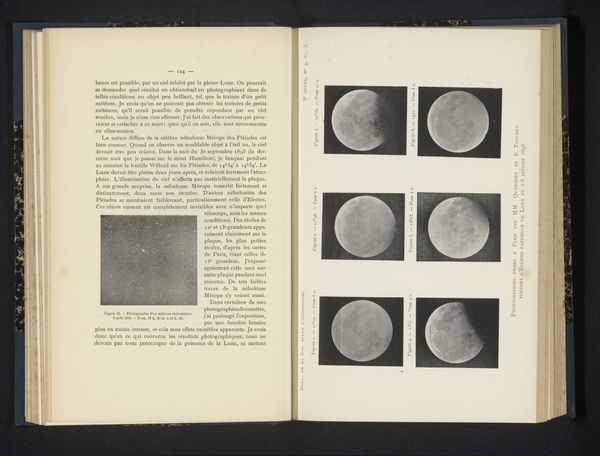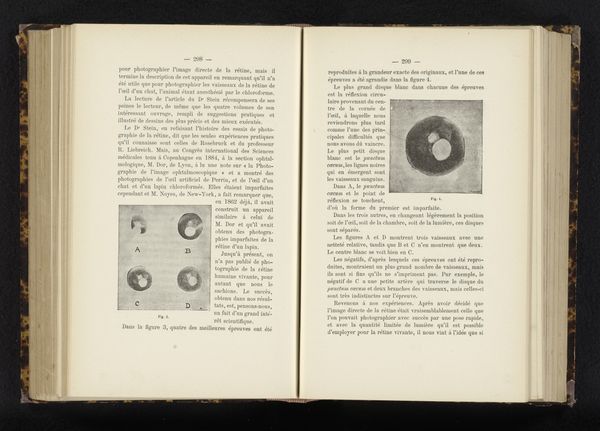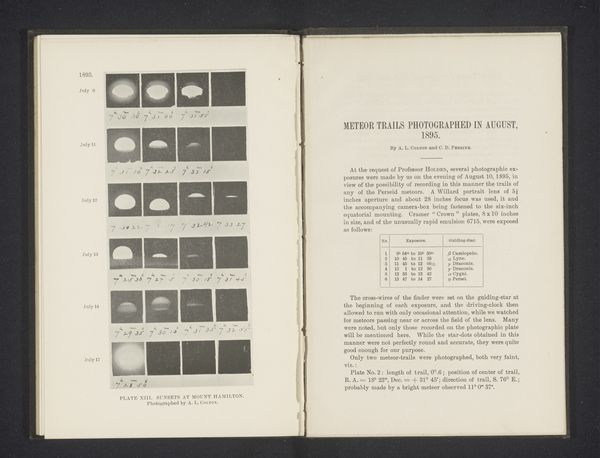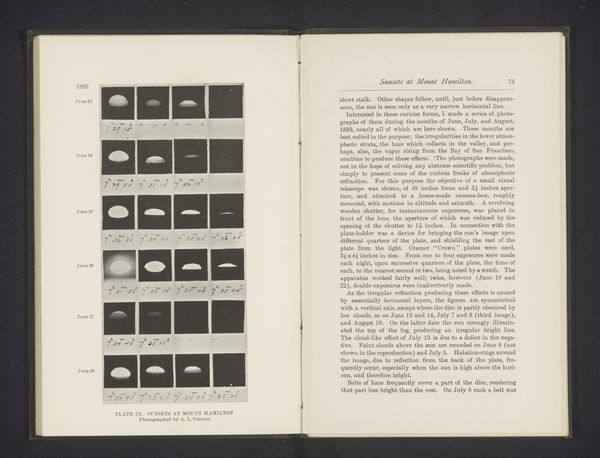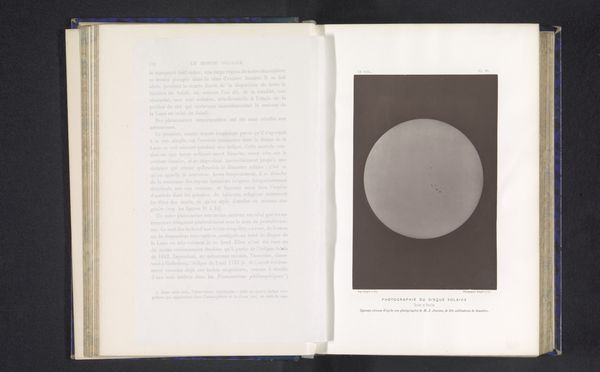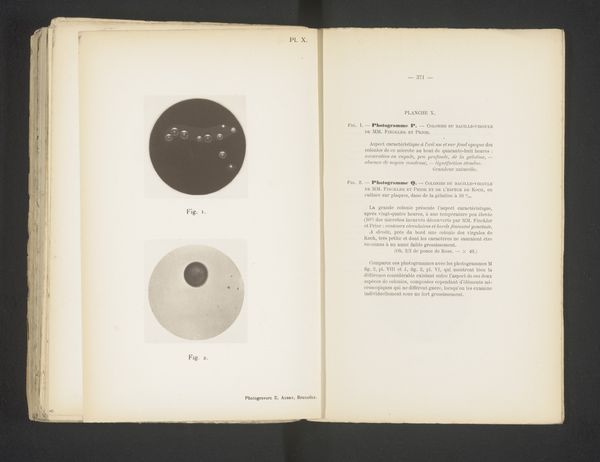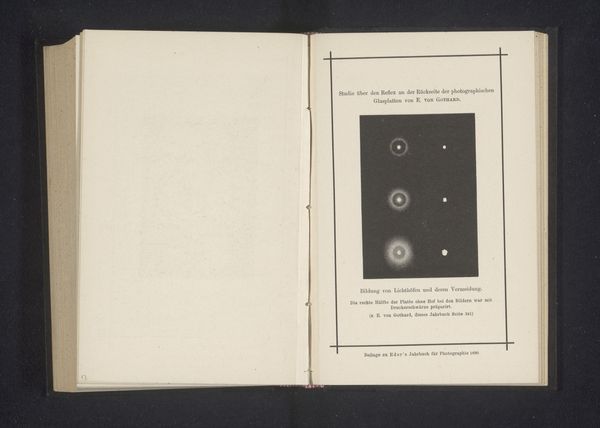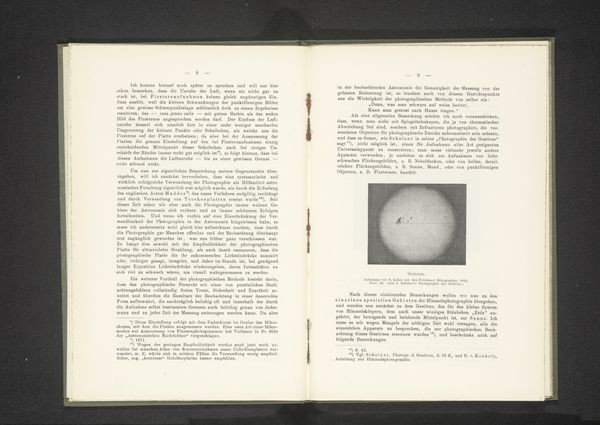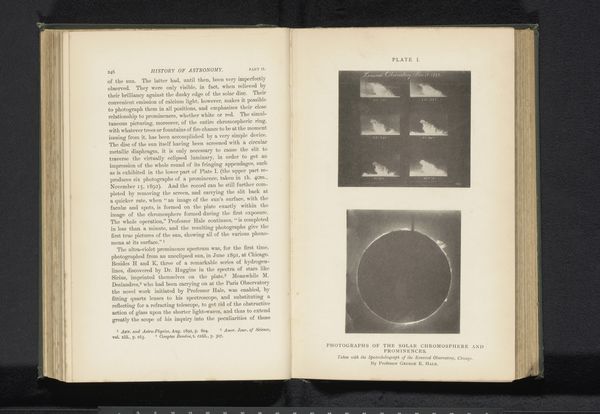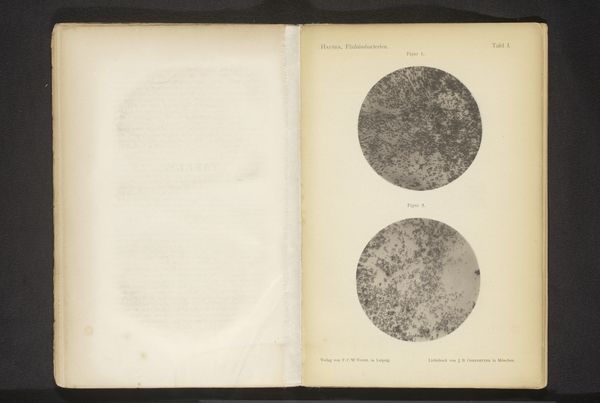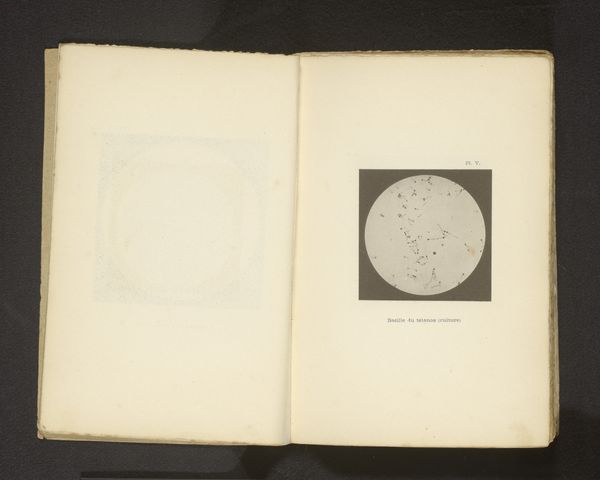
print, paper, photography
#
paper
# print
#
paper
#
photography
#
genre-painting
#
academic-art
Dimensions: height 260 mm, width 170 mm
Copyright: Rijks Museum: Open Domain
Curator: Here in front of us, we have "Four Stages of a Solar Eclipse", a print and photograph on paper possibly created between 1893 and 1894 by M. Charles. The muted tones feel appropriate for a scene capturing the dimming of daylight. What’s your first impression? Editor: It reminds me of some esoteric text or alchemical illustration. The simple geometry of the circles, progressively devoured by darkness, speaks to something beyond just astronomy. I wonder, does it evoke a sense of foreboding for you? Curator: The academic quality and scientific context provide me a rather objective feeling. But, true, these stark images and that high contrast also bring an ominous quality to mind. Like something immense is slowly but surely swallowing the light. Solar eclipses do often function as metaphors in myth and folklore, harbingers of change or disaster. Editor: Exactly! This methodical presentation of the eclipse stages could be interpreted on several levels. The disappearance of the sun in the middle of the day challenges our normal perception of time, with profound symbolism as it interrupts our natural order and illuminates deep fears of the dark. The way the eclipse transforms the circle of the sun into something utterly foreign reminds me of the Ouroboros. Curator: I hadn't considered that image but I appreciate it now. The way a complete circle, usually connoting completeness, shifts into an arc, is so potent. The scientific approach clashes with such emotional and psychological impacts of the imagery. I imagine, at the time this was created, many audiences were equally taken by its scientific rigor and spiritual connotations. Editor: I suppose the magic is seeing something ancient through a new lens, observing both with equal attention. A kind of beautiful blend of knowing, in the scientific sense, and seeing. What an intersection. Curator: A blend indeed. It reminds me how we are compelled to record and examine natural phenomena both to better understand the science, but perhaps more crucially to place our existence within a larger, ever-changing cosmos.
Comments
No comments
Be the first to comment and join the conversation on the ultimate creative platform.
